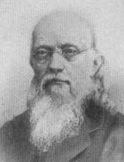INTRODUCTION
TONG. Baryosma Tongo,. Coumarouma Odorata, tongo Bean. See Nenning, in Hartlaub and Trinks ‘ “Annals.”.
GENERAL SYMPTOMS.
Lacerating in the limbs, relieved by motion and pressure. Epileptic paroxysms. Yawning, with stretching and dread of labor, in the afternoon. Drowsiness and great indolence after dinner. Chill in the open air, afternoon. Sad and apprehensive. Ill-humored.
CHARACTERISTIC PECULIARITIES.
Most of the symptoms come on while sitting, and better by rest generally.
HEAD AND SENSORIUM.
Compressive sensation in the occiput, with external sensitiveness. Pressure on the vertex, with throbbing. Drawing pain, particularly in the right frontal eminence. Painful drawing deep in the brain, when lying. Lacerating in the head, with pressure and sticking, great ill-humor, painful sensitiveness of the scalp. Sticking in the vertex, also with contractive cutting in the occiput. Beating headache early after rising, with heaviness of the head. Ulcerative pain in the right occiput, with sensitiveness of the skin to the touch. Heat in the head. Sensitiveness of the scalp to contact.
EYES AND NOSE.
Drawing and tension in the lower lid. Itching of the inner canthus. Burning and dryness of the eyes. Lacerating in the ears. Deeply-penetrating lacerating in the ears Coryza, with stoppage of the nose.
FACE AND TEETH.
Pale complexion, with red cheeks. Lacerating in the gums or roots of the teeth. lacerating in the upper molars. Lacerating in all the lower teeth. Bleeding of the gums.
MOUTH
Frequent thirst.
STOMACH AND ABDOMEN.
Cutting around the stomach. Burning and cutting in the right hypochondrium. The bowels are very sensitive. Burning tension in the right hypogastrium, and along the chest. Pinching in both sides of the abdomen. Pinching in the epigastrium, with turning in the stomach as of a ball. Burning in the abdomen.
STOOL,
Violent ineffectual urging. Hard stool, with much straining. Pinching and rumbling in the abdomen, followed by diarrhoeic stool with mucus, and succeeded by tenesmus. Wine-colored urine, depositing a sediment of viscous mucus. The menses are too early. discharge of thick mucus from the vagina, when straining at stool.
CHEST,
Burning in the larynx, with hoarseness. Stitches deep in the chest. Stinging in the region of the ribs, succeeded by burning and stinging on a large surface. Pain in the small of the back, with sensitiveness to pressure. Violent pain as if bruised, when sitting, going off during motion.
LEGS.
Lacerating in the arm. lacerating from the knee to the middle of the tibia. Lacerating, at times in the thigh, at others in the knee, relieved by pressure and walking.

